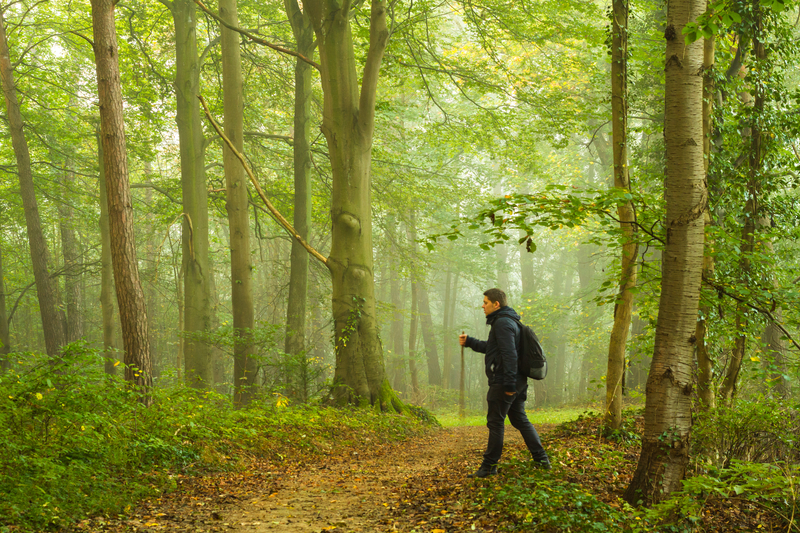In this particular challenge, the rules are simple, a knife is the only tool! Once the challenger is in the wilderness one of the first tasks they would need to accomplish is finding a relatively safe location, building a shelter and finding a source of food. Learn how this one participant was able to safely complete the challenge!
The Location
I started hiking and found an area next to a field with a pond with a few old fruit trees. One of these would make an ideal site for a shelter. The canopy of the tree was dome shaped, and the branches nearly drooped to the ground. This shape helps to block the wind and the rain if you can build a shelter underneath. As I hiked in, I had also found a few plastic bottles that somebody had discarded. These would be perfect to collect some water.
The knife I brought with me was a long, heavy camp knife that is perfect for chopping and for more detailed work. I used this to cut down a small maple for a ridge pole on my shelter.
Looking Good
I was able to slide the ridge pole into crooks in both trees to support the weight. I then started cutting down smaller branches about four feet long and less than one inch in diameter. I also stumbled across an old board that had been burned into three pieces. I leaned these boards against the ridge pole to make a portion of my shelter even more waterproof.
Finding Water
I would have to collect rainwater if I wanted to drink. After scouting the area, I found a dip in a rock structure that had collected rainwater the night before. It was large enough that this spot would supply plenty of clean water for the three days.
Back To Work
I went back to working on my shelter and started pulling up dead grasses for thatching on the roof. I started at the bottom of the lean-to, stacking layer after layer of dead grass until the roof was completely filled in.
Keeping Off The Mud
I piled about 10 inches of grasses inside the shelter for a bed to get me up off of the mud. Thankfully the clothes I was wearing were water resistant, so I did not have to worry about them getting soaked through.
Food For Thought
I started looking around for wild edible plants and found an abundance of my favorites. There was an old peach tree that had tiny unripe peaches about the size of marbles. There were wild burdock and wild carrots along the edges of the field.
The roots of these plants can be peeled and eaten for starches. There were plenty of maple seed pods around that look like a helicopter blade as they fall. Finally, there were a half dozen different varieties of edible greens that provided some added calories, vitamins, and minerals.
Food, Water, Shelter…What’s left?
The only challenge left would be the weather. The rains started again that night and did not stop again until the end of my challenge. The roof of my shelter held up fine, and the canopy of the tree did a good job of blocking the wind.
It turns out that areas all around me faced severe flooding and flash flooding while I huddled in my little lean-to. I was a bit sore from lying in the shelter for three days, but I am always sore after a challenge. This was a learning experience for me as I was able to really test my skills for building a shelter and finding food and water. Out of all my challenges, this was the first during which I ever built a shelter without cordage.
Would you want to try surviving 24 hours in the wilderness with only a knife?
Article Source: Survival Life
